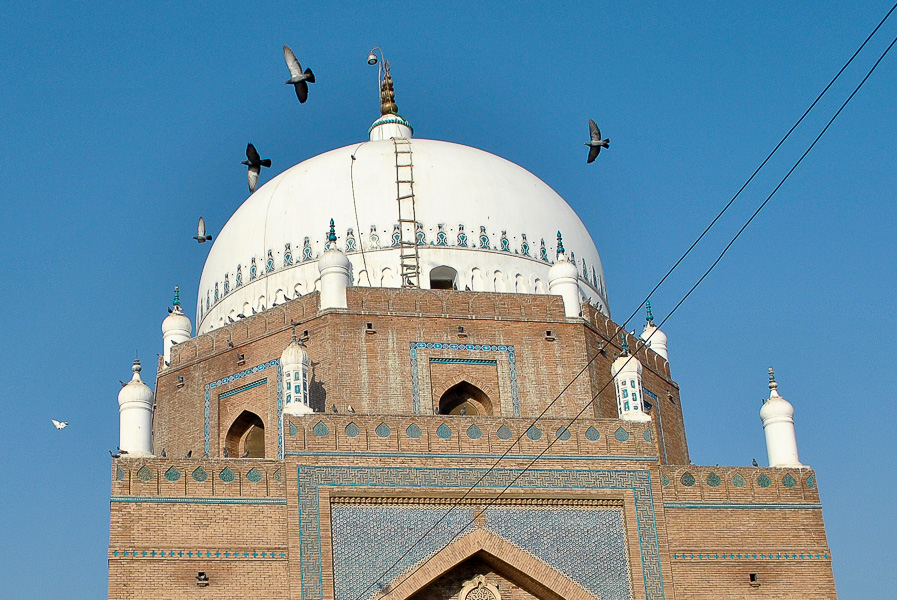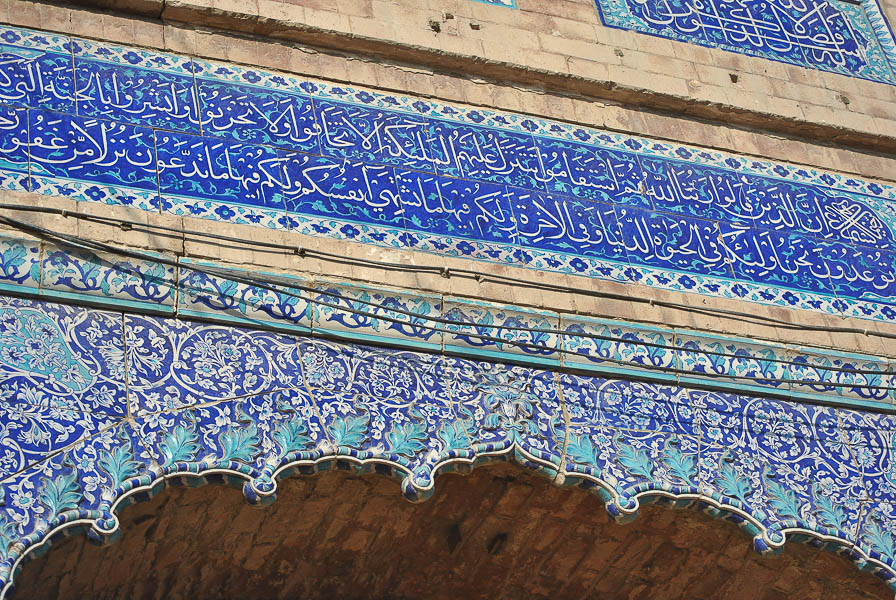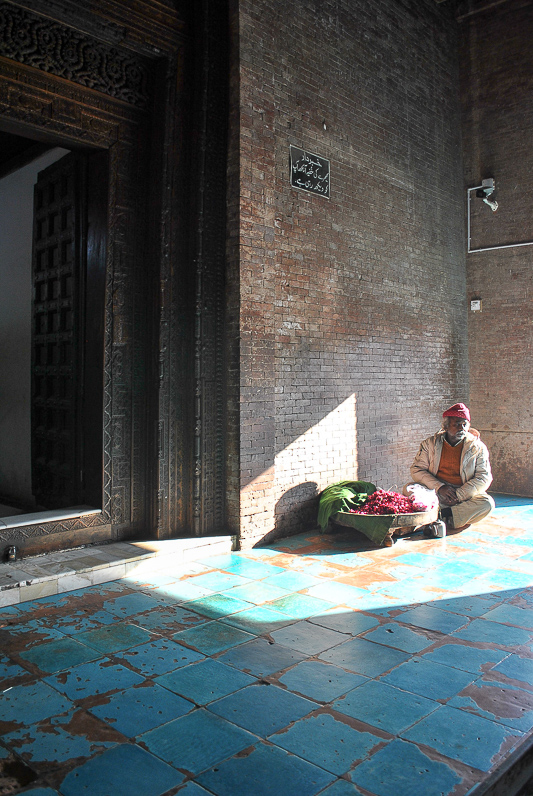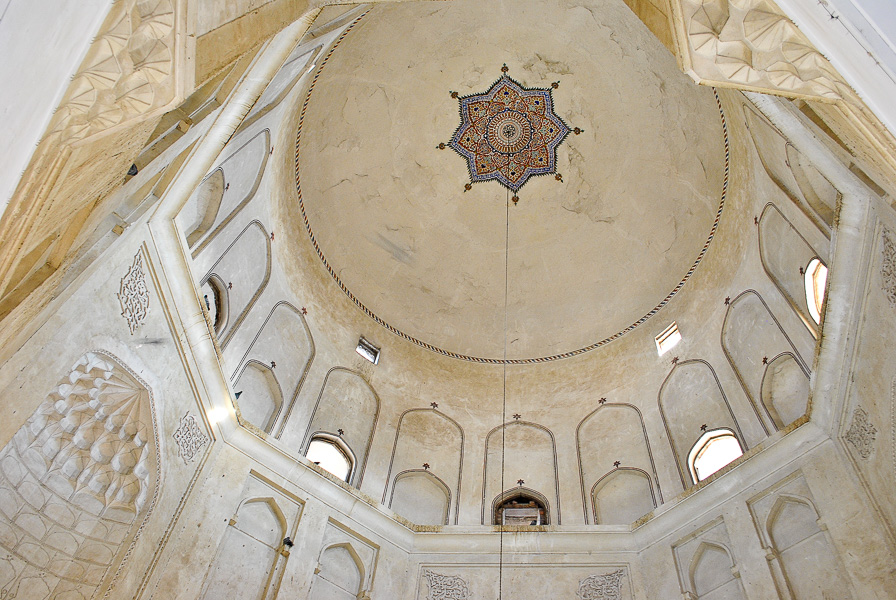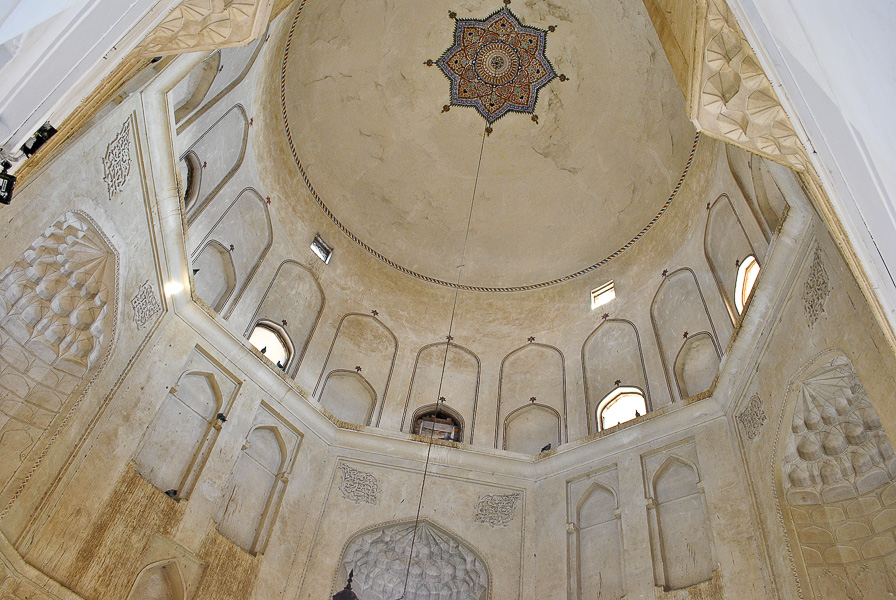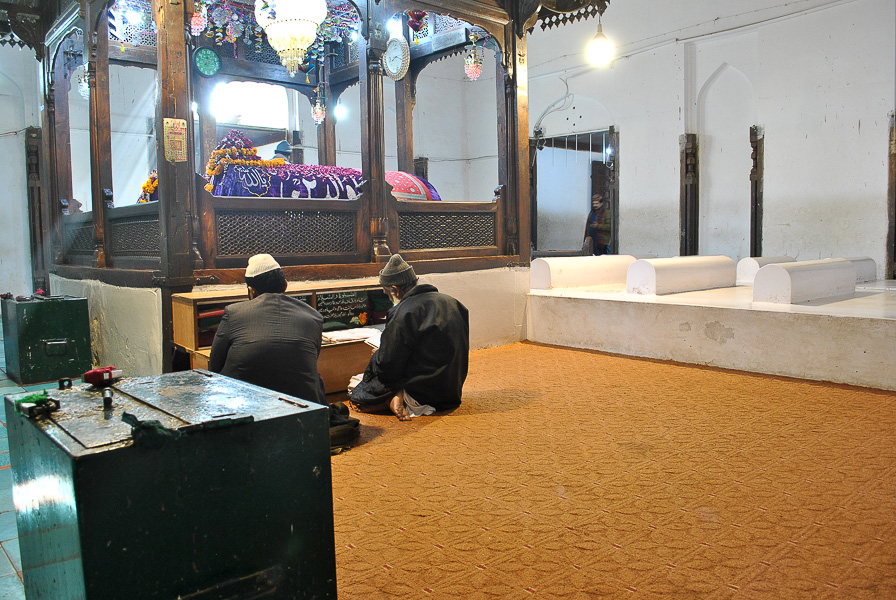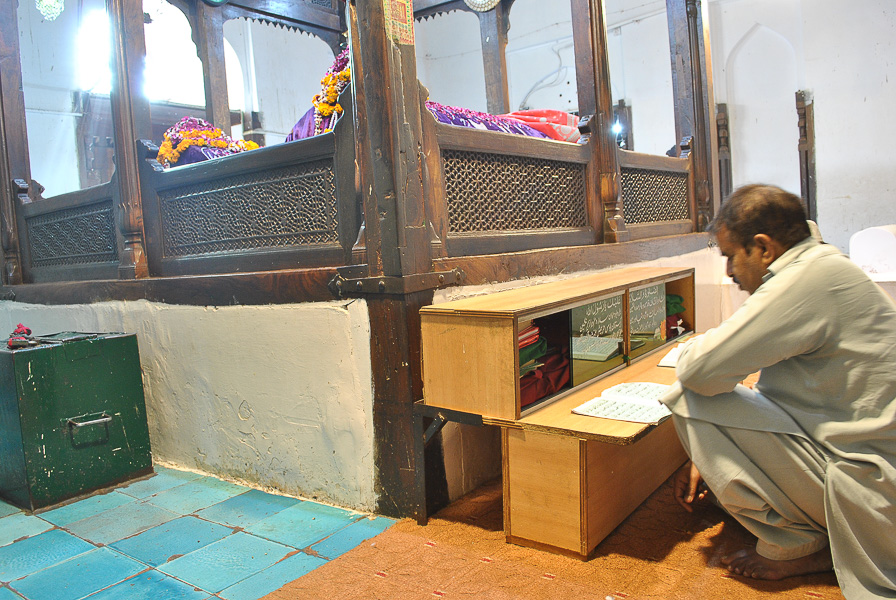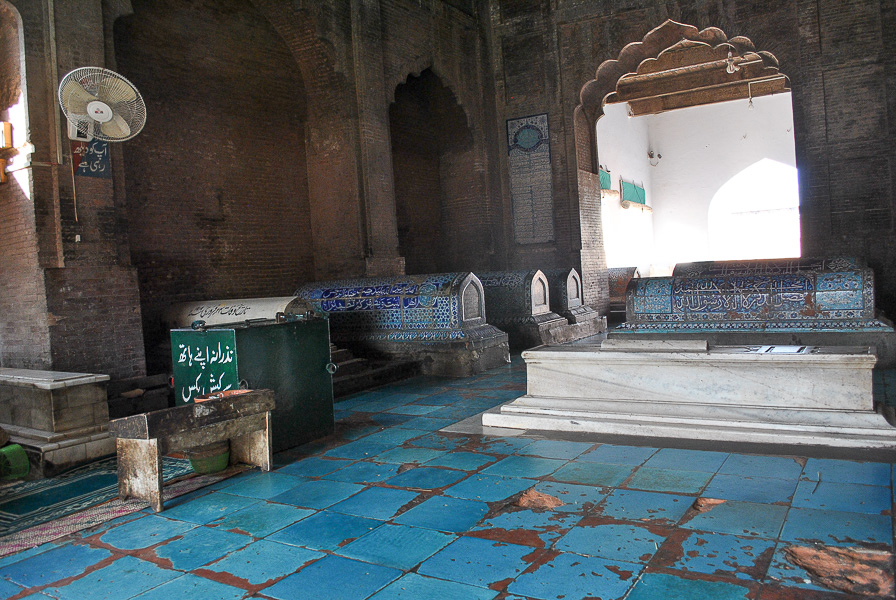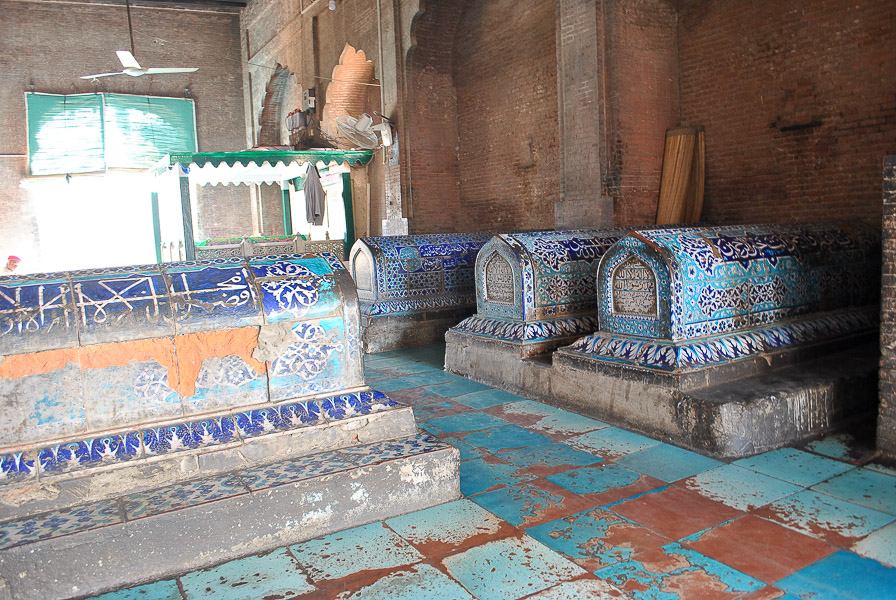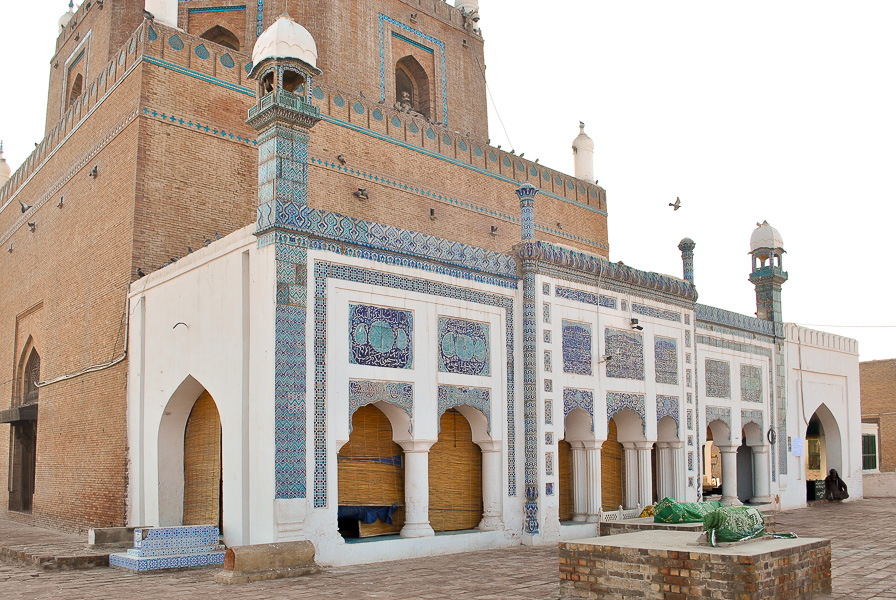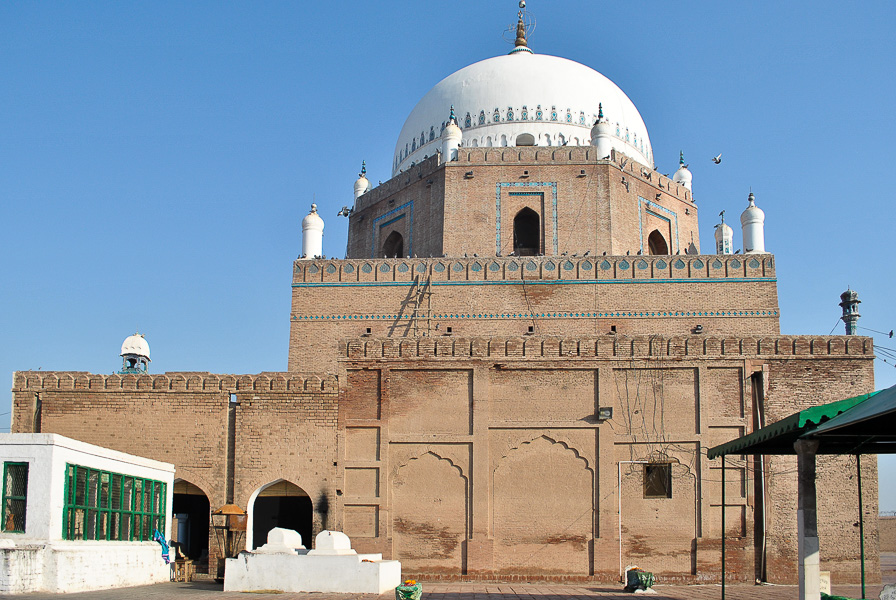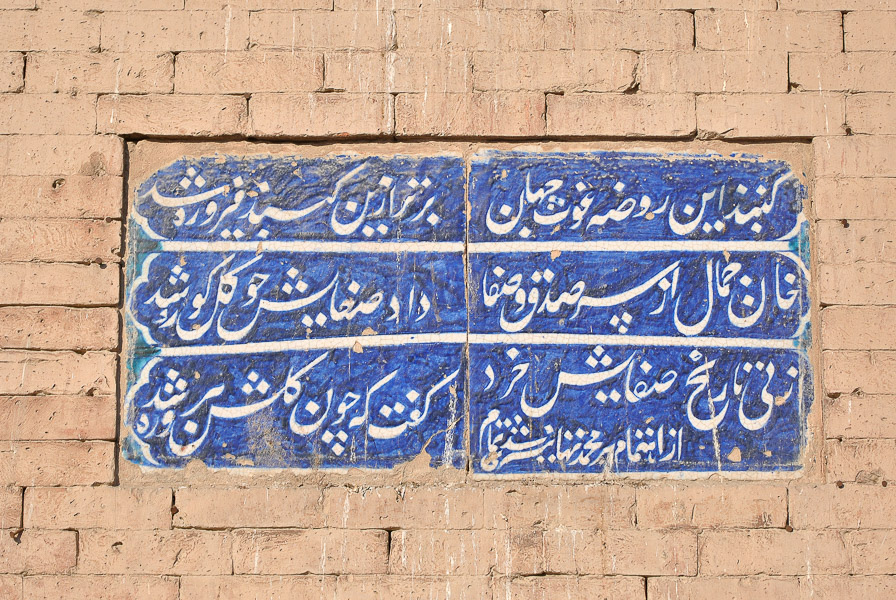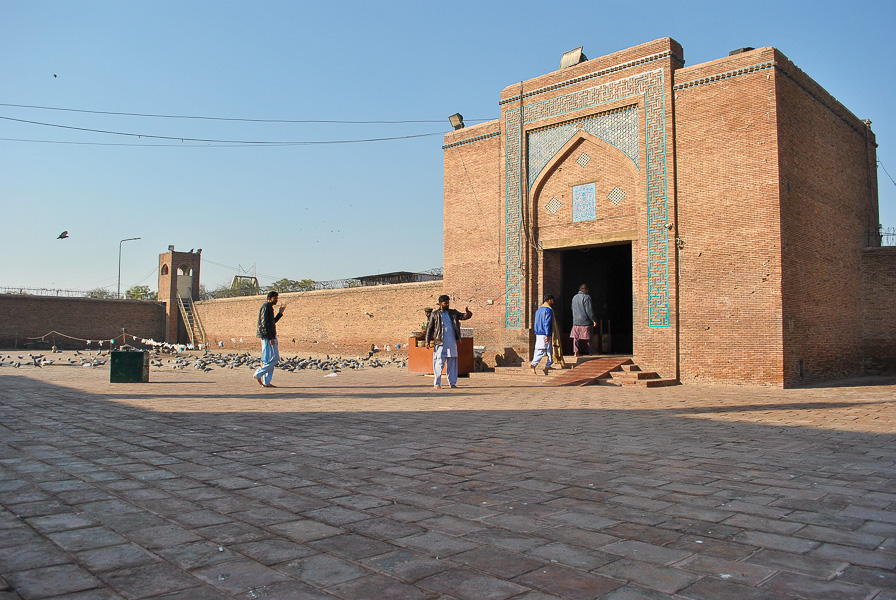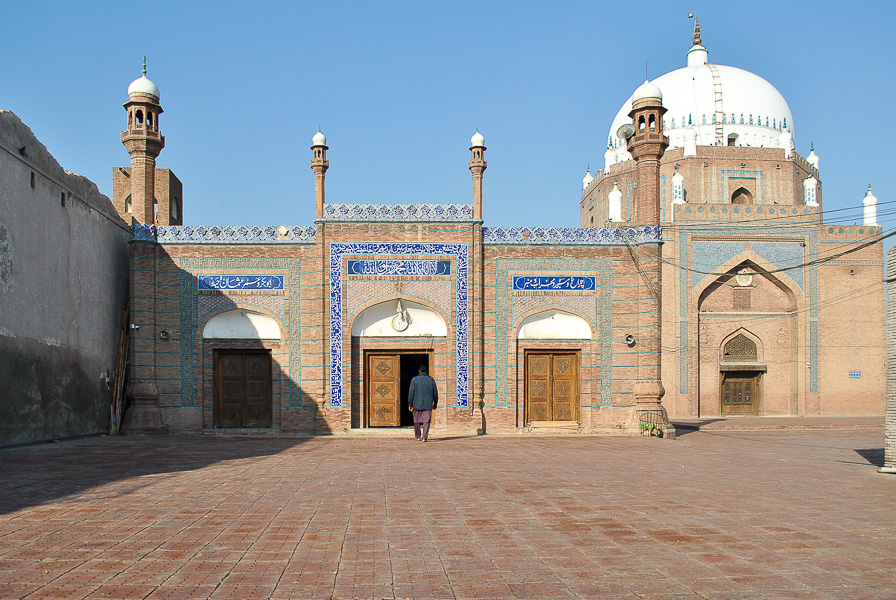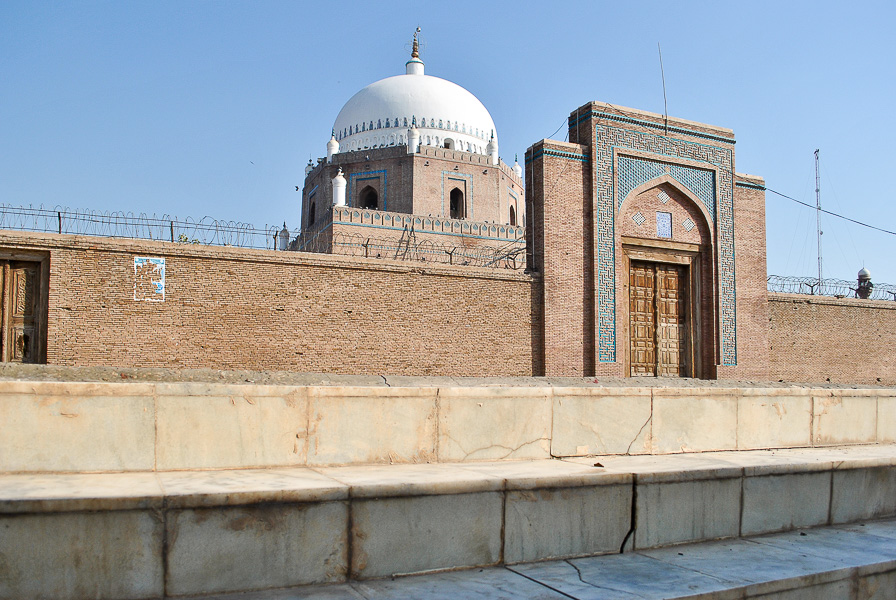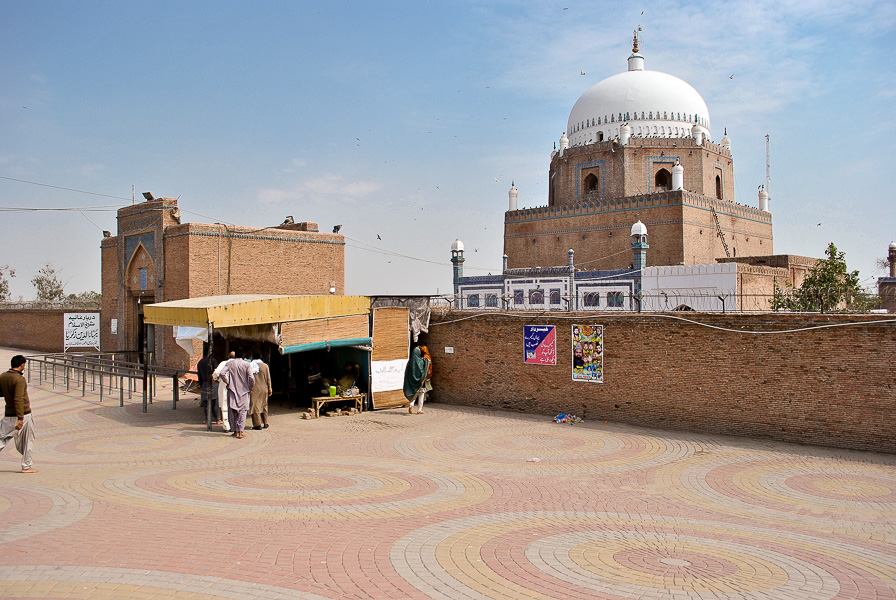Bahauddin Zakariya Tomb
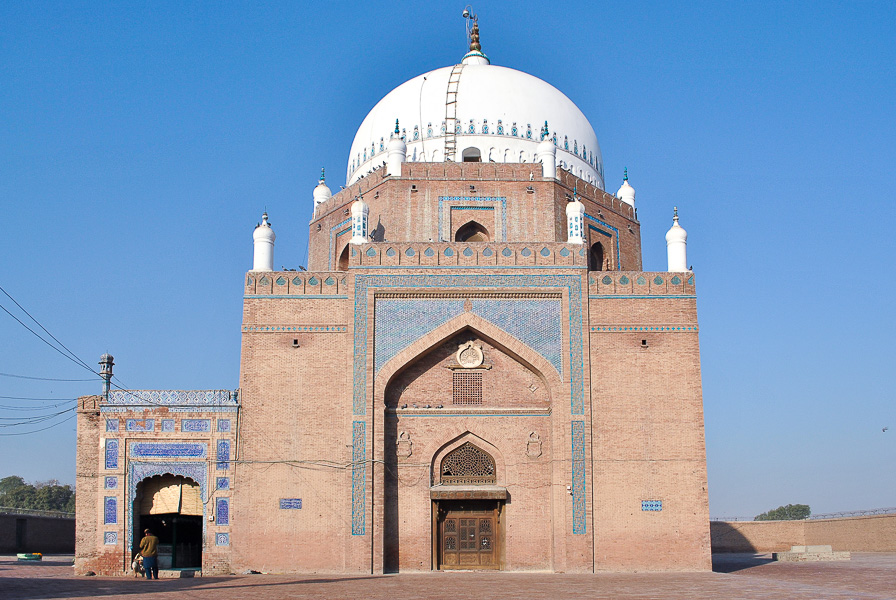
La tumba de Bahauddin Zakariya se encuentra en el centro de Multan, en la esquina noreste del antiguo fuerte en el corazón de la ciudad vieja. Construido a principios y mediados del siglo XIII, representa el ejemplo más antiguo de un estilo arquitectónico distintivo de Multani que, según Mumtaz, "con su planta cuadrada, tambor octogonal, una cúpula central y minaretes en las esquinas, establece un tipo de edificio mausoleo que iba a perdurar en el valle inferior del Indo durante 700 años "(Mumtaz, págs. 44-45). Aunque el mausoleo fue destruido en gran parte por los bombardeos británicos en el sitio de 1848, Makhdum Shah Mahmud lo restauró fielmente sobre sus cimientos originales unos años más tarde.
La tumba alberga los restos mortales de Bahauddin Zakariya (1170-1262), un conocido Sufi wali (santo) que trajo la orden Suhrawardiyya del sufismo a Multan. También fue el abuelo de Rukn-e Alam, un santo conocido por derecho propio que está enterrado en un magnífico mausoleo a 500 metros al suroeste.
En su juventud, tras la muerte de su padre a los 12 años, Zakariya viajó mucho por el mundo islámico y visitó Khurasan, Bukhara y Medina. Más tarde llegó a Bagdad y estudió con el maestro sufí Abu Hafs Umar Suhrawardi (c. 1145-1234), sobrino del fundador de la orden Suhrawardiyya, Abu Najib Suhrawardi. Abu Hafs Umar vio un potencial tan grande en él que interrumpió los estudios de Zakariya después de 17 días y le ordenó que regresara a Multan para establecer un Suhrawardiyya khanqah allí (un khanqah es un edificio o recinto para reuniones sufíes). Si bien Zakariya no fue bienvenido de inmediato (la ciudad ya tenía tal profusión de notables sufíes que muchos se mostraron escépticos de agregar otro a la lista), el khanqah continúa prosperando bajo la guía de Zakariya que duró más de medio siglo. Como la orden Suhrawardiyya no evitó la pobreza (a diferencia de otras órdenes sufíes), Zakariya se hizo rico a lo largo de su larga vida, particularmente después de que ganó el apoyo de las élites locales y el favor de gobernantes regionales como Nasir al-din Qabacha, el Gobernador turco-musulmán de Multan y Uch Sharif. A pesar de no ocupar ningún cargo político formal, Hasan Ali Khan señala que "Con el tiempo, Zakariya tuvo una voz casi absoluta en el proceso de toma de decisiones en Multan" (Khan, p. 31).
En la década de 1220, la fama de Zakariya se había extendido a reinos vecinos como el Sultanato de Delhi, entonces gobernado por el mameluco Sultan Iltutmish (r. 1211-1236). A pesar de las escaramuzas entre Iltutmish y Qabacha, ambos hombres tenían a Zachariya en alta estima. Por razones que no se comprenden completamente, Zakariya tomó el peligroso paso de escribir una carta abierta a Iltutmish solicitando que se apoderara de Multan de Qabacha. Aunque este plan fracasó, al menos inicialmente, Zakariya evitó la ejecución alegando que la carta fue escrita por orden divina; por lo tanto, Qabacha accedió a un perdón total. A su debido tiempo, Iltutmish marchó sobre Multan y se apoderó de la ciudad en 1227, recompensando a Zakariya con el título de Shaykh al-Islam, un honor que solo sirvió para pulir las credenciales de Zakariya.
En 1246, cuando ya tenía 70 años, Multan fue asediado por invasores mongoles, pero Zakariya pudo convencerlos de que se retiraran parlamentando con Malik Shamsuddin, un musulmán del ejército invasor, a cambio de 100.000 dinares de su propio bolsillo. A pesar de tales pérdidas, a medida que la vida de Zakariya se acercaba a su fin, aún conservaba la fortuna suficiente para construir su propia tumba de manera grandiosa, lo que condujo al edificio (reconstruido) que se mantiene hasta el día de hoy. Su hijo, Sadr al-din, asumió el liderazgo de la orden y, a su debido tiempo, fue sepultado junto a su padre en la misma tumba.
The tomb of Bahauddin Zakariya stands in central Multan in the northeast corner of the former fort at the heart of the old city. Built in the early-mid 13th century, it represents the earliest example of a distinctive Multani style of architecture which, according to Mumtaz, "with its square plan, octagonal drum, a central dome and corner minarets, establishes a type of mausoleum building which was to endure in the lower Indus valley for 700 years" (Mumtaz, pp. 44-45). Although the mausoleum was largely destroyed by British shelling in the siege of 1848, it was faithfully restored upon its original foundations by Makhdum Shah Mahmud a few years later.
The tomb houses the mortal remains of Bahauddin Zakariya (1170-1262), a noted Sufi wali (saint) who brought the Suhrawardiyya order of Sufism to Multan. He was also the grandfather of Rukn-e Alam, a noted saint in his own right who is buried at a magnificent mausoleum 500 meters to the southwest.
In his youth, following the death of his father at age 12, Zakariya traveled widely around the Islamic world and visited Khurasan, Bukhara, and Medina. He later reached Baghdad and studied under the Sufi master Abu Hafs Umar Suhrawardi (c.1145-1234), the nephew of the founder of the Suhrawardiyya order, Abu Najib Suhrawardi. Abu Hafs Umar saw such great potential in him that he cut short Zakariya's studies after 17 days and ordered him back to Multan to set up a Suhrawardiyya khanqah there (a khanqah is a building or compound for Sufi gatherings). While Zakariya was not immediately welcomed—the city already had such a profusion of Sufi notables that many were skeptical of adding another to the roster—the khanqah continue to prosper under Zakariya's guidance which lasted over a half century. As the Suhrawardiyya order did not eschew poverty (unlike other Sufi orders), Zakariya grew rich over the course of his long life, particularly after he gained the support of local elites and the favor of regional rulers such as Nasir al-din Qabacha, the Muslim-Turkic governor of Multan and Uch Sharif. Despite holding no formal political office, Hasan Ali Khan notes that "In time, Zakariya commanded a near absolute say in the decision making process in Multan" (Khan, p. 31).
By the 1220s, Zakariya's fame had extended to neighboring kingdoms such as the Sultanate of Delhi, then ruled by the Mamluk Sultan Iltutmish (r. 1211-36). In spite of skirmishes between Iltutmish and Qabacha, both men held Zachariya in high esteem. For reasons that are not fully understood, Zakariya took the dangerous step of writing an open letter to Iltutmish requesting that he seize Multan from Qabacha. Though this plan failed, at least initially, Zakariya avoided execution by claiming that the letter was written by divine command; hence, Qabacha agreed to a full pardon. In due time, Iltutmish did march upon Multan and seized the city in 1227, rewarding Zakariya with the title of Shaykh al-Islam, an honor which only served to burnish Zakariya's credentials.
In 1246, when he was already in his 70s, Multan was besieged by Mongol invaders, but Zakariya was able to convince them to retreat by parleying with Malik Shamsuddin, a Muslim in the invading army, in exchange for 100,000 dinars from his own purse. Despite such losses, as Zakariya's life neared its end, he still maintained sufficient fortune to construct his own tomb in grand fashion, leading to the (reconstructed) edifice that stands to the present day. His son, Sadr al-din, took over leadership of the order and, in due time, was laid to rest beside his father in the same tomb.
